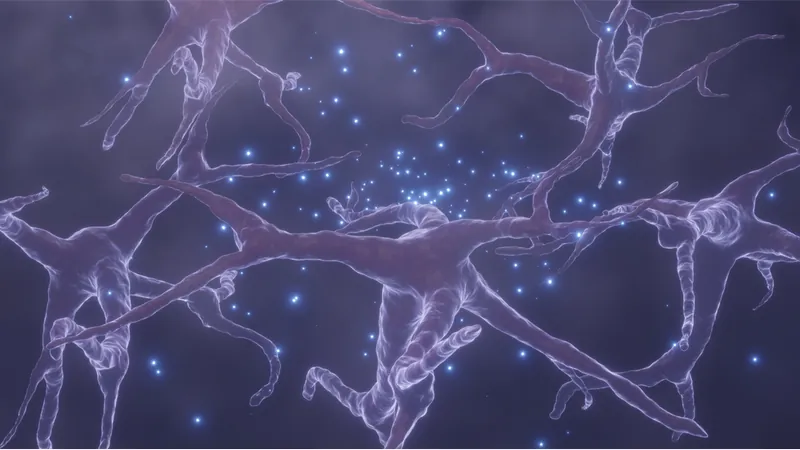Researchers have found that blocking the activity of a single gene causes other cell types to become dopamine-producing neurons, a type of neuron that Parkinson’s disease destroys.
What is Parkinson’s disease?
Parkinson’s disease is a progressive, age-related, neurodegenerative disease that mainly affects the motor system and thus movement. Symptoms start gradually; sometimes it begins with a barely noticeable tremor in just one hand. These tremors and shakes are common, and the disorder also commonly causes stiffness and difficulty of movement.
The symptoms affecting motor skills are the result of the death of specialized dopamine-producing neurons in the region of the brain known as the substantia nigra, a region of the midbrain.
The reasons why these cells die is poorly understood, but it certainly involves the accumulation and formation of waste proteins into Lewy bodies in the neurons. The end result is that the loss of these neurons leads to a lack of dopamine in the brain, which then causes the telltale symptoms of impaired motor skills.
It has long been suggested that a possible approach to curing Parkinson’s disease could be to replace the lost dopamine-producing neurons, and a number of researchers have been developing ways to achieve this. Recently published research takes this idea beyond the typical idea of stem cell transplants and explores an exciting new solution to the problem.
Creating new neurons to replace losses
Dr. Xiang-Dong Fu and his team at the University of California San Diego School of Medicine recently published a new study that builds upon a fortunate discovery that they made some time ago [1].
They discovered several years back that inhibiting the PTB gene using siRNA or even deleting the gene entirely in connective tissue cells called fibroblasts caused them to change into neurons. This got them thinking about the idea of using this discovery as a foundation for a therapy that might replace lost neurons in the brain and potentially treat a range of neurodegenerative diseases in which neurons are destroyed.
They found that when they used PTB inhibition in a mouse model of Parkinson’s disease, astrocyte cells in the brain transformed into neurons. Astrocytes are “star-shaped” cells that reside in the brain and are the most common of the glial cells in the brain that are closely associated with neuronal synapses. They support the brain by helping to regulate the transmission of electrical impulses within the brain.
Following PTB inhibition, the symptoms of Parkinson’s vanished in the mice, which suggests that the conversion of astrocytes allowed some of them to replace some of the dopamine-producing neurons in that area of the brain lost to Parkinson’s disease.
The mice returned to normal function within three months after just one treatment and remained free from the symptoms of Parkinson’s disease for the remainder of their lives.
The team’s next step will be to refine its methods and test the approach in a different mouse model of Parkinson’s, one which uses a genetic modification to emulate the disease. In this study, the team used a molecule to poison the dopamine-producing neurons, causing the mice to develop symptoms similar to Parkinson’s disease. They have also patented their approach to ultimately test it in human trials in the future.
Parkinson’s disease is characterized by loss of dopamine neurons in the substantia nigra. Similar to other major neurodegenerative disorders, there are no disease-modifying treatments for Parkinson’s disease. While most treatment strategies aim to prevent neuronal loss or protect vulnerable neuronal circuits, a potential alternative is to replace lost neurons to reconstruct disrupted circuits. Here we report an efficient one-step conversion of isolated mouse and human astrocytes to functional neurons by depleting the RNA-binding protein PTB (also known as PTBP1). Applying this approach to the mouse brain, we demonstrate progressive conversion of astrocytes to new neurons that innervate into and repopulate endogenous neural circuits. Astrocytes from different brain regions are converted to different neuronal subtypes. Using a chemically induced model of Parkinson’s disease in mouse, we show conversion of midbrain astrocytes to dopaminergic neurons, which provide axons to reconstruct the nigrostriatal circuit. Notably, re-innervation of striatum is accompanied by restoration of dopamine levels and rescue of motor deficits. A similar reversal of disease phenotype is also accomplished by converting astrocytes to neurons using antisense oligonucleotides to transiently suppress PTB. These findings identify a potentially powerful and clinically feasible approach to treating neurodegeneration by replacing lost neurons.
Conclusion
This approach is very promising, though we should be cautious here, as mice are not people and these results may not translate. These researchers are taking their time to test the approach in another mouse model of the disease to see if they can achieve similar results. The field is littered with failed attempts to reverse Parkinson’s, as promising results in individual animal models have failed to pan out, so doing the experiment again in another mouse model is a wise move.
That said, it is a proof of concept that replacing lost neurons could work as a way to cure Parkinson’s, even if it does not translate directly and without any modification for human use. The exhaustion of specialized cell populations is thought to be one of the reasons we age, so it is good to see a working solution in action.
Literature
[1] Qian, H., Kang, X., Hu, J., Zhang, D., Liang, Z., Meng, F., … & Devaraj, N. K. (2020). Reversing a model of Parkinson’s disease with in situ converted nigral neurons. Nature, 582(7813), 550-556.




